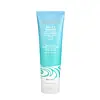What's inside
What's inside
 Key Ingredients
Key Ingredients

 Benefits
Benefits

 Concerns
Concerns

 Ingredients Side-by-side
Ingredients Side-by-side

Water
Skin ConditioningCetearyl Alcohol
EmollientParfum
MaskingBehentrimonium Chloride
PreservativeDistearyldimonium Chloride
Glycerin
HumectantQuaternium-80
Hydrogenated Vegetable Oil
EmollientPrunus Amygdalus Dulcis Oil
Skin ConditioningCamellia Sinensis Leaf Powder
ExfoliatingMalus Domestica Fruit Extract
AntioxidantLeuconostoc/Radish Root Ferment Filtrate
AntimicrobialHydroxyethylcellulose
Emulsion StabilisingPhenoxyethanol
PreservativeEthylhexylglycerin
Skin ConditioningWater, Cetearyl Alcohol, Parfum, Behentrimonium Chloride, Distearyldimonium Chloride, Glycerin, Quaternium-80, Hydrogenated Vegetable Oil, Prunus Amygdalus Dulcis Oil, Camellia Sinensis Leaf Powder, Malus Domestica Fruit Extract, Leuconostoc/Radish Root Ferment Filtrate, Hydroxyethylcellulose, Phenoxyethanol, Ethylhexylglycerin
Water
Skin ConditioningCetrimonium Chloride
AntimicrobialCetyl Alcohol
EmollientSorbitol
HumectantPanthenol
Skin ConditioningHydrolyzed Soy Protein
HumectantAscophyllum Nodosum Extract
Skin ConditioningChlorella Pyrenoidosa Extract
Skin ConditioningStearyl Alcohol
EmollientHelianthus Annuus Flower
Skin ConditioningStearamidopropyl Dimethylamine
EmulsifyingBehentrimonium Methosulfate
Cetearyl Alcohol
EmollientCaprylic/Capric Triglyceride
MaskingDimethicone
EmollientSimmondsia Chinensis Seed Oil
EmollientLecithin
EmollientPotassium Sorbate
PreservativeSodium Benzoate
MaskingTocopherol
AntioxidantEthylhexylglycerin
Skin ConditioningParfum
MaskingMusa Sapientum Fruit Extract
Skin ConditioningSalvia Hispanica Seed Extract
EmollientWater, Cetrimonium Chloride, Cetyl Alcohol, Sorbitol, Panthenol, Hydrolyzed Soy Protein, Ascophyllum Nodosum Extract, Chlorella Pyrenoidosa Extract, Stearyl Alcohol, Helianthus Annuus Flower, Stearamidopropyl Dimethylamine, Behentrimonium Methosulfate, Cetearyl Alcohol, Caprylic/Capric Triglyceride, Dimethicone, Simmondsia Chinensis Seed Oil, Lecithin, Potassium Sorbate, Sodium Benzoate, Tocopherol, Ethylhexylglycerin, Parfum, Musa Sapientum Fruit Extract, Salvia Hispanica Seed Extract
Ingredients Explained
These ingredients are found in both products.
Ingredients higher up in an ingredient list are typically present in a larger amount.
Cetearyl alcohol is a mixture of two fatty alcohols: cetyl alcohol and stearyl alcohol. It is mainly used as an emulsifier. Emulsifiers help prevent the separation of oils and products. Due to its composition, it can also be used to thicken a product or help create foam.
Cetearyl alcohol is an emollient. Emollients help soothe and hydrate the skin by trapping moisture.
Studies show Cetearyl alcohol is non-toxic and non-irritating. The FDA allows products labeled "alcohol-free" to have fatty alcohols.
This ingredient is usually derived from plant oils such as palm, vegetable, or coconut oils. There is debate on whether this ingredient will cause acne.
Due to the fatty acid base, this ingredient may not be Malassezia folliculitis safe.
Learn more about Cetearyl AlcoholEthylhexylglycerin (we can't pronounce this either) is commonly used as a preservative and skin softener. It is derived from glyceryl.
You might see Ethylhexylglycerin often paired with other preservatives such as phenoxyethanol. Ethylhexylglycerin has been found to increase the effectiveness of these other preservatives.
Parfum is a catch-all term for an ingredient or more that is used to give a scent to products.
Also called "fragrance", this ingredient can be a blend of hundreds of chemicals or plant oils. This means every product with "fragrance" or "parfum" in the ingredients list is a different mixture.
For instance, Habanolide is a proprietary trade name for a specific aroma chemical. When used as a fragrance ingredient in cosmetics, most aroma chemicals fall under the broad labeling category of “FRAGRANCE” or “PARFUM” according to EU and US regulations.
The term 'parfum' or 'fragrance' is not regulated in many countries. In many cases, it is up to the brand to define this term.
For instance, many brands choose to label themselves as "fragrance-free" because they are not using synthetic fragrances. However, their products may still contain ingredients such as essential oils that are considered a fragrance by INCI standards.
One example is Calendula flower extract. Calendula is an essential oil that still imparts a scent or 'fragrance'.
Depending on the blend, the ingredients in the mixture can cause allergies and sensitivities on the skin. Some ingredients that are known EU allergens include linalool and citronellol.
Parfum can also be used to mask or cover an unpleasant scent.
The bottom line is: not all fragrances/parfum/ingredients are created equally. If you are worried about fragrances, we recommend taking a closer look at an ingredient. And of course, we always recommend speaking with a professional.
Learn more about ParfumWater. It's the most common cosmetic ingredient of all. You'll usually see it at the top of ingredient lists, meaning that it makes up the largest part of the product.
So why is it so popular? Water most often acts as a solvent - this means that it helps dissolve other ingredients into the formulation.
You'll also recognize water as that liquid we all need to stay alive. If you see this, drink a glass of water. Stay hydrated!
Learn more about Water